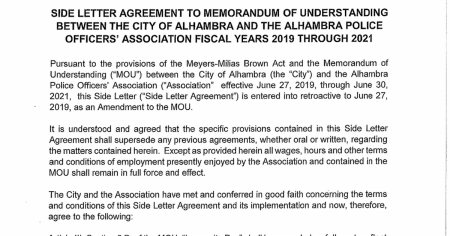Side letter
|
Negotiation Anatomy™

|
Side letter
/saɪd/ /ˈlɛtə/ (n.)
Another great canard in the pantheon of preposterous ways our learned friends go about finding consensus ad idem, the side letter is an agreement that sits to the “side” of another, main agreement, and which usually operates to undermine it utterly.
The theory seems to be that since a side letter is somewhat out of sight, or points in a slightly different direction, or — I don’t know, is smaller, or less grandiose than the main agreement it circumvents — that people can “get themselves comfortable” pretending the side letter is not, formally, there, while at the same time understanding, substantially, that it totally is there, and outrageously mocks the stated economic objective of the main razzle-dazzle agreement that everyone feels comfortable pretending is there when, by the ministrations of the side letter, it is not.
There is some kind of existential paradox here. You know how the JC loves a paradox. In the sense that they are cosmetic artefacts, designed to give one appearance while delivering a different reality, the JC denounces side letters as stupid, unbecoming things, with which no sensible legal eagle should ever have truck. But being a pragmatic fellow he also recognises there will be times where a legal eagle’s ditch tolerance is not so great that she will go to the wall to avoid having such truck. Look, no-one’s proud of a side letter — you don’t put an unusual facility with side letters on your CV, or write learned tomes about them, but sometimes you have to do what you have to do, you know? Life’s complicated.
Sensible uses for side letters, and things that are a bit like side lettters
Side letters have some sensible applications, but they are far fewer and further between than the number of side letters one encounters in real-life. As best as I can figure out, they are these:
- Arrangements to cover multiple contracts: If, say, you have a cash trading arrangement and a synthetic trading arrangement, and they are governed by different masdter contracts (terms of business for trh former, an ISDA Master Agreement fo rht latter) and you want to agree, say, a commission-sharing arrangement that would apply to both of them, then a side letter — really a completely separate agreement, truth be told — isd the best way of doing that. But this isn’t really a side letter.
- Arrangements between some but not all parties to a contract: If you are lucky enough to be a party to a multilateral contract — an inter-creditor agreement, or a principal paying agency agreement or something — you may wish to make private arrangements with one or other counterparty but not all of them.
- Arrangements struck after the original contract: you may agree to change or update the terms of an original contract sometime after its execution. amongst ISDA ninjas, for example, there is a curious reluctance to “reopen” the terms of a concluded contract – personally I have never understood this, but the fear seems to be you that in doing so may unwittingly open Pandora's box or the unleash the hounds of hell somehow – and if you are of such a fragile constitution you may wish to include updated terms in a separate “amendment agreement”. However, again, this isn’t really a “side letter” in its purest, absurdest form. But for the record an amendment and restatement of the original agreement is a much smarter thing to do. This is just my opinion.